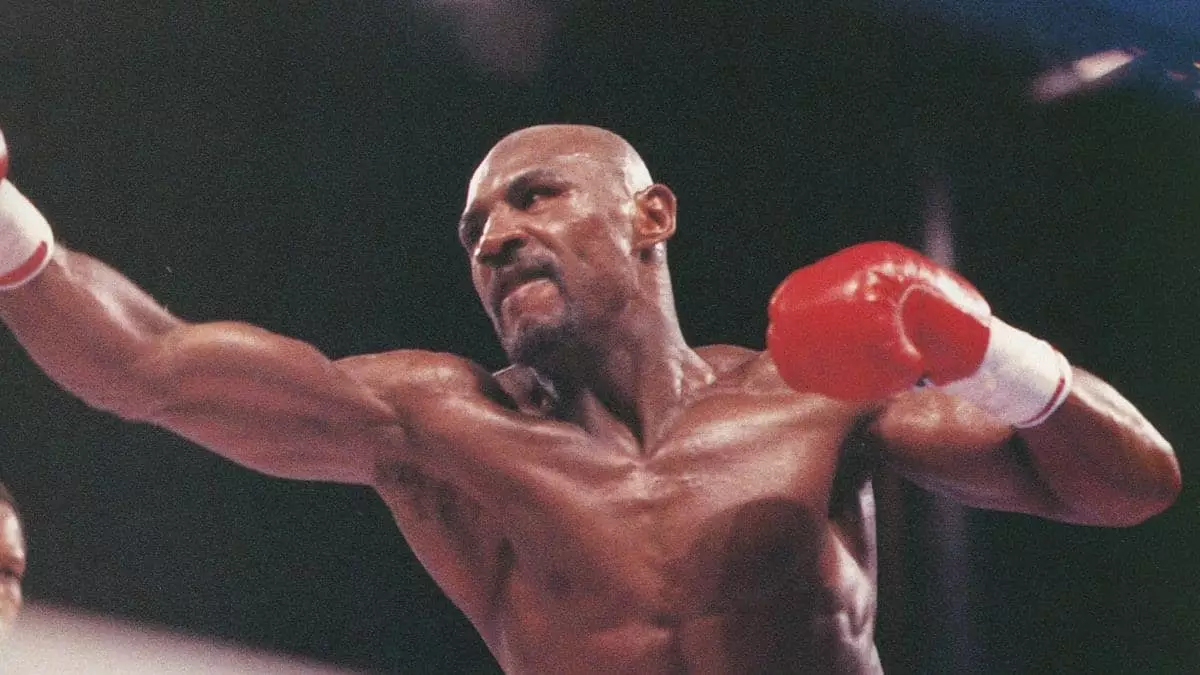On April 6, 1987, boxing history was rewritten under the bright lights of Caesars Palace in Las Vegas, as two titans collided in what would be eternally dubbed the “Super Fight.” Sugar Ray Leonard, emerging from a near three-year hiatus, faced off against Marvelous Marvin Hagler, a man whose relentless style and formidable prowess in the ring had made him a legend. The fight was not just a clash of two exceptional boxers; it was a battle that had fans and pundits alike desperately engrossed in a contact sport narrative that would stand the test of time.
The atmosphere was electric, laden with anticipation and trepidation. Leonard’s return, after significant eye surgery that had once threatened his career, raised eyebrows and questions. Would he emerge victorious against a fighter like Hagler, who had just displayed his own fortitude in a grueling face-off against John Mugabi? This narrative of comeback and rivalry—and the jeopardy that Leonard faced—created a palpable tension that transcended that fateful evening.
The Build-Up and Conditions
Prior to the fight, an unusual set of demands from Leonard set the stage. He called for a 22-foot ring, 10-ounce gloves, and a reduction from the traditional 15 rounds to 12. These stipulations augured significant debate and added layers of drama to the encounter. Many ardent boxing fans felt that such adjustments were reflective of Leonard’s insecurity, while others believed it revealed a meticulous strategy designed to maximize his agility and minimize Hagler’s power. What cannot be denied, though, is how these conditions crafted an intriguing chess match within the boxing ring; a fight dictated not merely by physical strength but by psychological warfare.
Leonard’s decision not to engage in a tune-up fight before taking on Hagler was another risky and audacious element of the narrative. His credibility was on the line, and it left many scratching their heads. Yet, such risks are oftentimes heralded in the realm of greatness, marking the characteristics of legends willing to face immense challenges head-on.
A Masterclass Performance
What unfolded over the next 12 rounds was a stunning display of boxing artistry, footwork, and tactical brilliance from Leonard. Even for those who may not have favored him, his ability to slip punches, counter effectively, and control the rhythm of the fight was evident, leaving an indelible mark in boxing lore. Leonard exuded a confidence that reverberated across the arena, as he danced around the ring, leveraging his speed to evade Hagler’s powerful strikes while delivering precise combinations.
Conversely, Hagler appeared caught in a conflict of styles, spending considerable time boxing in his orthodox stance rather than the more aggressive southpaw pose that had defined his earlier feats. While Hagler’s strategy evolved throughout the match, the initial approach allowed Leonard to gain valuable momentum, as the fight shifted into an unexpected paradigm.
The judges’ scoring echoed the atmosphere of controversy that enveloped the fight. With one judge inexplicably scoring the bout 118-110 in favor of Leonard, debates erupted instantly—was it an inaccurate assessment or a testament to Leonard’s agility in the ring? Supporters of Hagler argued that such a margin was impossible against a fighter of Hagler’s caliber.
Eternal Legacy and Ongoing Debate
As the dust settled and opinions were exchanged, the legacy of Leonard vs. Hagler began to flourish. Boxing aficionados were left divided—some lauding Leonard for his return to the pinnacle of boxing while others decried the decision as one of the most significant robberies in sports history. The fight encapsulated the essence of competition—namely, it illuminated the subjective nature of sport itself.
Decades later, discussions about the bout remain fervent, and it is often listed among the greatest fights of all time. The camaraderie of those who witnessed it firsthand creates a community structured around shared memories, while younger generations delve into the battle’s intricacies through footage and analyses. This dichotomy of experiences proves that great sporting events ripple through time, affecting spectators and athletes beyond their immediate experience.
In retrospect, the fight transcended sport, intertwining itself into cultural dialogues about risk, redemption, and legacy. Leonard’s memorable victory may be debated, but it will always herald the ethos of a boxer willing to gamble everything against an iconic opponent—a fight not just for a title, but a fight to define oneself in the arena of legends.


Leave a Reply